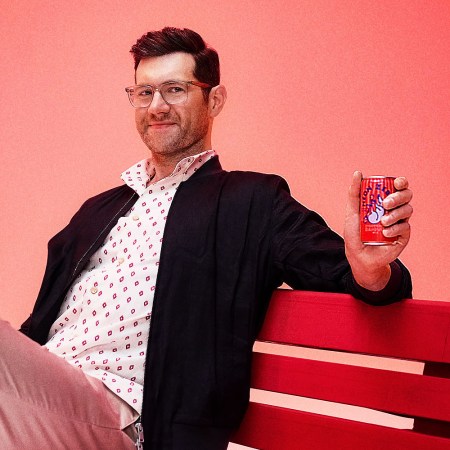Over the next two weeks, we’ll be publishing a series of interviews with thought leaders from a number of industries about the impact of COVID-19 and — more importantly — the improvements they expect to last well into the future. Get to know Post-Pandemic America.
Get used to telehealth. Also: Drones?
That’s the potential future of healthcare, according to Lesley Rohrbaugh, the director of research at Consumer Technology Association, which owns and produces the annual Consumer Electronics Show (CES).
This past year, that normally huge tech event was forced to go virtual due to ongoing COVID-19 concerns. But even in its online-only format, more than 2,000 companies were able to showcase their gear, and many of those featured products and services were directly influenced by the coronavirus pandemic.
“We’ve seen health and wellness increase as a category year to year,” as Rohrbaugh tells InsideHook. “We weren’t surprised this year to see all these new ways to track coronavirus and general health trends, whether it was apps, smart products, robotics or even things like disinfection robots.”
Overseeing the world’s biggest tech industry conference gives Rohrbaugh an advantage when it comes to spotting trends. As far as healthcare, here are a few things she picked up from this year’s event.
Telehealth is here to stay
Those doctor appointments that you had via Zoom, or the use of devices/apps that offer remote patient monitoring? All of that is going to become a regular part of your health routine. The good news is that all the major players are on board, not just eager start-ups. “We saw insurance companies have a big presence at the show, we saw employers, and we now know that the FDA is getting involved with products and offering approval as it comes to digital therapeutics,” says Rohrbaugh, who noted that many panels and discussions did try to address the BIG health question everyone has: “Who is gonna pay for all of this?”
Not everything health related was centered on COVID
Several of the apps and devices at CES weren’t “one track only,” as Rohrbaught put it, AKA only focused on COVID-19. But one standout device — a CES Best of Innovation Award Honoree — certainly seemed to focus on the ongoing global situation: BioIntellisense’s wearable and very discreet BioButton health monitor, which tracks your skin temperature and respiratory system (among other things) and serves as an early warning detector for coronavirus symptoms.
Health wearables are transforming in form and factor
“When you used to think of wearables, you used to think of of a form factor like a Fitbit,” says Rohrbaugh. “But now you have ‘air wearables’ like the the Airpop smart mask, smart clothing for athletes and the Ora smart ring, which the NBA was using for tracking purposes.”

Whatever the case, connected health monitoring devices should see sales and revenue increase by about 35% this year, a very recent update made to the five-year CTA Health and Fitness Sector Forecast, which is more about longterm trends.
Not everything can be accomplished over a screen
And that’s where drones come in. This isn’t just a Jeff Bezos fever dream — Rohrbaugh pointed out several current use cases for delivery robots, on ground or in the air. “Drones for delivering products really, pun intended, took off last year,” she says. “I’ve seen them and other robot delivery systems in my neighborhood in D.C. It’s great because it’s a contactless, touchless system where you can order by phone. The best example from the past year was this Florida retirement community that was using drones to get their prescriptions delivered quickly and safely.”
With new tech come new concerns
Telehealth, drones, wearables … it all sounds nice and futuristic, but there are several issues related to these ambitious endeavors. Among the concerns of the tech community, as noted by Rohrbaugh: protecting consumer privacy, the digital divide between computer literate and those without a technology background, broadband access, reimbursement from insurance companies and overall affordability.
“But it’s important to note that some of the technologies we saw were things people can access for free,” says Rohrbaugh. “Especially certain apps. One in particular we liked was Epsy, a free app for tracking seizure, medications and side effects as it relates to epilepsy, and being able to share that info with a health care provider in real time. Not everything we saw was necessarily ‘tangible’ in your hands like a wearable, but it was a service that people could have access to already that could continue to transform the healthcare industry.”
This article was featured in the InsideHook newsletter. Sign up now.






















